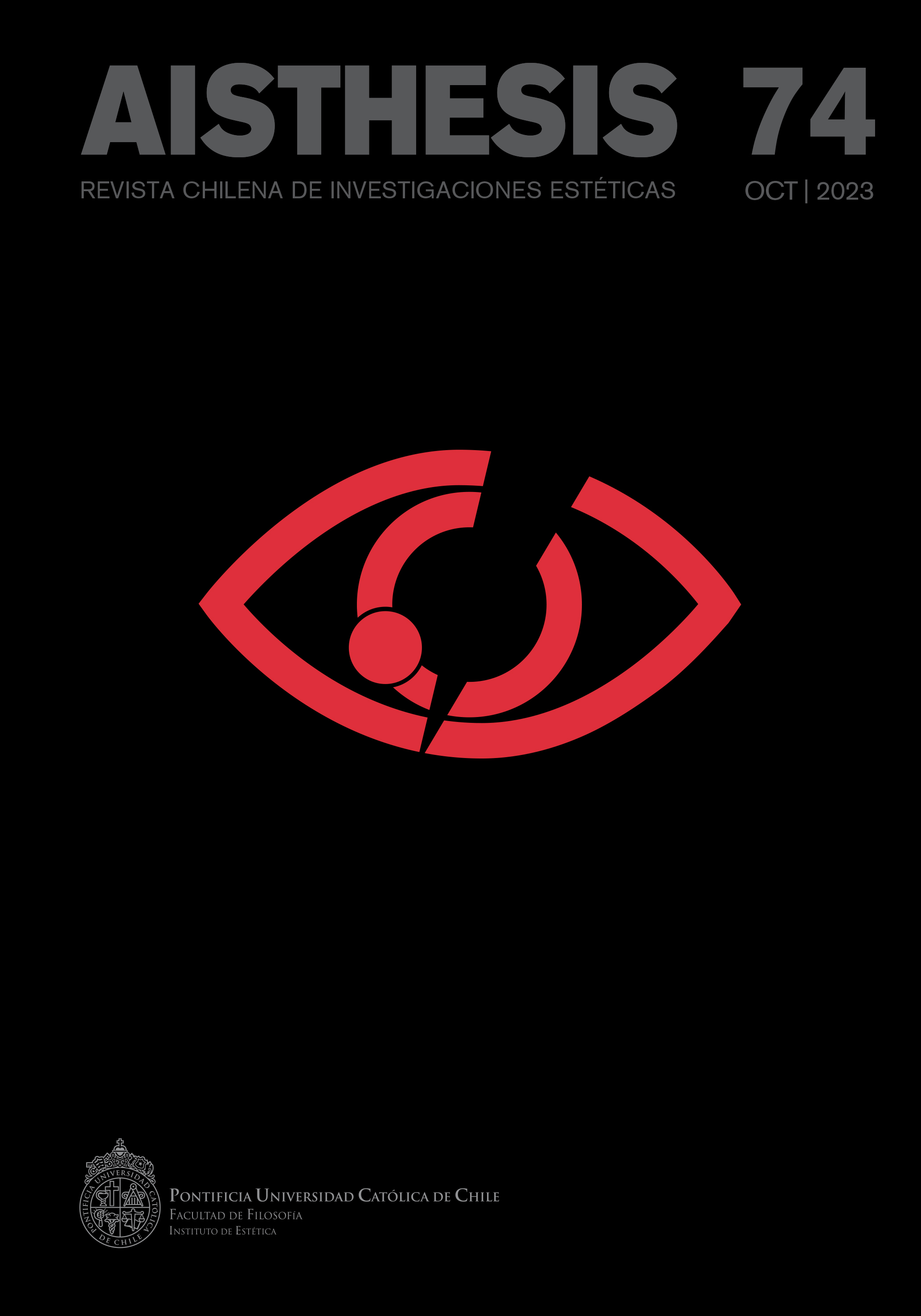Museum design: aesthetics and education heritage on the Silk Road
Main Article Content
Abstract
This article presents the results of an investigation based on the analysis of the aesthetics of museums created in cities that are part of the Silk Road. The approach to these museums is based on the observation of educational and patrimonial aspects, elements that characterize the essence of these institutions. UNESCO has been promoting, since 1988, actions related to the Silk Road, a commercial route now converted into a path of dialogue between different cultures. We have observed that each museum studied insists on those issues of local and national rank that characterize its idiosyncrasy. Each museum enhances the educational facets from the tradition of silk production, and also heritage issues to strengthen the characteristic features of each community. We have interviewed their managers, and observed their buildings and collections. We detected that, in spite of the international influence of the initiative, or precisely because of it, in each case studied it is decided to influence the local differential factors, giving priority to the aesthetic arguments of cultural identity. We examine the specific case of the Valencia Silk Museum, the most recent creation, but which houses the oldest institution.
Downloads
Article Details

This work is licensed under a Creative Commons Attribution-NonCommercial-ShareAlike 4.0 International License.
All contents of this electronic edition are distributed under the Creative Commons license of "Attribución-shareAlike 4.0 Internacional" (CC-BY-SA). Any total or partial reproduction of the material must mention its origin.
The rights of academic works published in this publication belong to their authors., who grant to AISTHESIS: Revista Chilena de Investigaciones Estéticas the license for its use. The management of the permits and the authorization of the publication of the images (or of any material) that contains copyright and its consequent rights of reproduction in this publication is the sole responsibility of the authors of the articles
References
Referencias
Appiah, Kwame Anthony. Las mentiras que nos unen. Repensar la identidad. Taurus, 2019.
Augustowsky, Gabriela. El arte en la enseñanza. Paidós, 2012.
Barthes, Roland. Mythologies. Éditions du Seuil, 1957.
––. Lo obvio y lo obtuso. Paidós, 1986.
Bourdieu, Pierre. La distinción. Criterios y bases sociales del gusto. Taurus, 2012.
Byler, Darren. «New Silk Road Artworlds: The Art of the Hybrid and the Marginal at the Xinjiang Contemporary Art Museum». Journal of Contemporary Chinese Art, vol. 4, nº 1, 2017, pp. 27-43. DOI: 10.1386/jcca.4.1.27_1
Calvino, Ítalo. Seis propuestas para el próximo milenio. Siruela, 1994.
Castro, Sixto. «Una aproximación al complejo emotivo del arte». Aisthesis, nº 62, 2017, pp. 67-83.
Csíkszentmihályi, Mihály. The Art of Seeing. An Interpretation of the Aesthetic Encounter. The J. Paul Getty Trust, 1990.
Duncum, Paul. «Aesthetics, Popular Visual Culture, and Designer Capitalism». International Journal of Art & Design Education, vol. 26, nº 3, 2007, pp. 285-295.
Eco, Umberto. Apocalípticos e integrados. Tusquets, 1985.
Errázuriz, Luis Hernán. Sensibilidad estética. Un desafío pendiente en la educación chilena. PUC, 2006.
Fontal, Olaia. «El Observatorio de Educación Patrimonial en España». Cultura y Educación, nº 28, 2016, pp. 254-266.
Franch, Ricardo y Germán Navarro Espinach, coordinadores. Las rutas de la seda en la historia de España y Portugal. PUV, 2017.
García, Luis Ignacio. «La comunidad en montaje: Georges Didi-Huberman y la política en las imágenes». Aisthesis, nº 61, 2017, pp. 93-117.
Giroux, Henry. «La pedagogía crítica en tiempos oscuros». Praxis Educativa, vol. 17, nº 2, 2013, pp. 13-26.
Granados Manjarrés, Maritza. «De Leibniz a la arquitectura». Aisthesis, nº 60, 2016, pp. 63-67.
Hu, Jun. «Global Medieval at the End of the Silk Road, circa 756 CE: The Shoso in Collection in Japan». The Medieval Globe, vol. 3, nº 2, 2017, pp. 177-202.
Hubard, Olga. «The Act of Looking: Wolfgang Iser’s Literary Theory and Meaning Making in the Visual Arts». International Journal of Art and Design Education, vol. 27, nº 2, 2008, pp. 168-180.
Huerta, Ricard. Maestros y museos. Educar desde la invisibilidad. PUV, 2010.
––. «Desarrollo de ciudadanía desde la educación artística y patrimonial. Identidades urbanas en Iberoamérica». Aisthesis, nº 58, 2015, pp. 197-220.
Huerta, Ricard y Amparo Alonso-Sanz, coordinadores. Entornos informales para educar en artes. PUV, 2017.
Huerta, Ricard y Román de la Calle, editores. Patrimonios migrantes. PUV, 2013.
Huerta, Ricard, Amparo Alonso-Sanz y Ricard Ramon, coordinadores. Investigar y educar en diseño. Tirant lo Blanch, 2018.
Irwin, Rita. «Becoming A/r/tography». Studies in Art Education: A Journal of Issues and Research, vol. 54, nº 3, 2013, pp. 198-215.
Irwin, Rita y Donal O’Donoghue. «Encountering Pedagogy trough Relational Art Practices». International Journal of Art & Design Education, vol. 31, nº 3, 2012, pp. 221-236.
Lin, Hang. «Global Trade and Cross-Cultural Exchanges along the Silk Road: Cities and Lives Reconstructed through Archaeological Findings». Journal of Urban History, vol. 45, nº 6, 2019, pp. 1.273-1.282.
Malraux, André. El museo imaginario. Cátedra, 2017.
Mandoki, Katya. Estética cotidiana y juegos de la cultura. Siglo XXI, 2006.
Munari, Bruno. Diseño y comunicación visual. Contribución a una metodología didáctica. Gustavo Gili, 1985.
Navarro Espinach, Germán. El Col·legi de l’Art Major de la Seda de Valencia. Consell Valencià de Cultura, 1996.
––. «Las rutas de la seda como itinerarios culturales. Exposiciones y museología». Patrimonios migrantes. Eds. Ricard Huerta y Román de la Calle. PUV, 2013.
––. Art de velluters. El privilegio del rey Fernando el Católico (Valencia, 13 de octubre de 1479). Colegio del Arte Mayor de la Seda, 2017.
Nyberg, Klas. Till salu. Stokholms textile handel och manufaktur 1722-1846. Stads- och kommunhistoriska institutet, 2010.
Rogoff, Irit. Terra Infirma: Geography’s Visual Culture. Routledge, 2000.
Sennett, Richard. El artesano. Anagrama, 2013.
Zafra, Remedios. El entusiasmo. Precariedad y trabajo creativo en la era digital. Anagrama, 2017.
